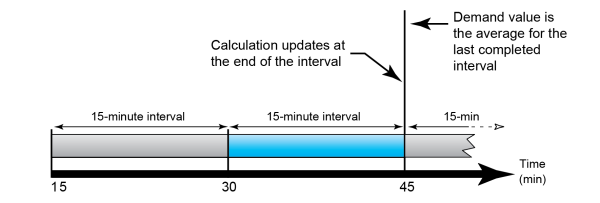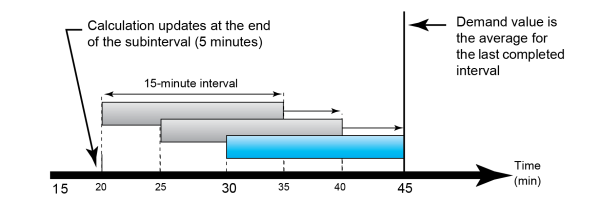Sliding window demand
To calculate demand values, your meter uses the sliding window averaging (or rolling interval) method which divides the demand interval into a set number of subintervals of specified duration.
The demand is measured based on the average load level over the most recent set of subintervals. Sliding window demand also provides predicted demand values.
Examples of sliding window demand
This example shows two different ways of configuring a 15-minute demand interval:
- Single interval (also called block or timed block): the 15-minute demand interval is defined as a single subinterval with a duration of 15 minutes.
- Sliding window (also called rolling block): the 15-minute demand interval is defined as three subintervals with a duration of 5 minutes each. This method offers better response time than a single interval.
Single interval (block)

Sliding window (rolling block)
